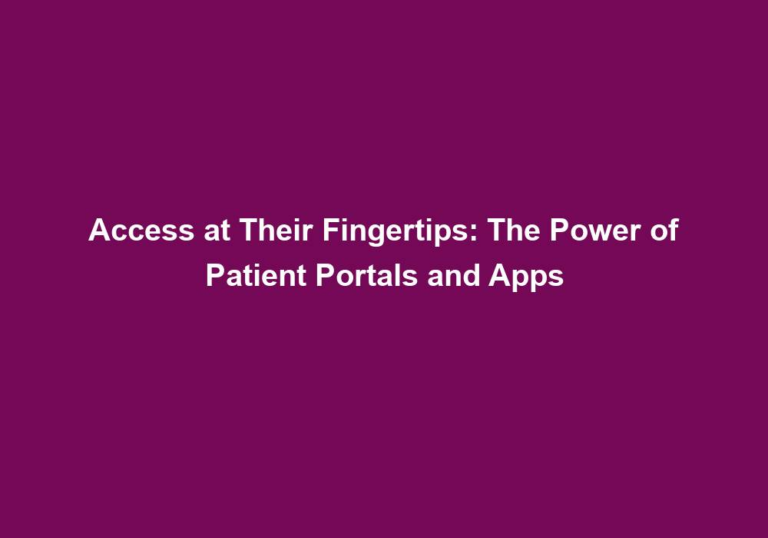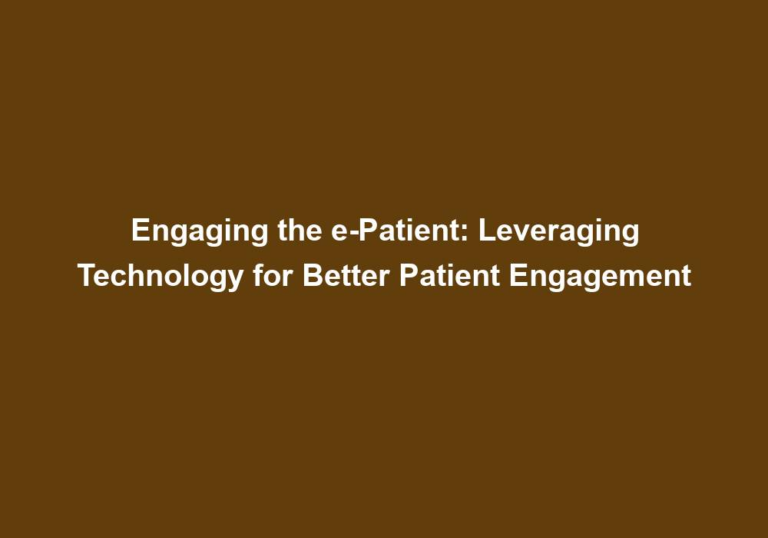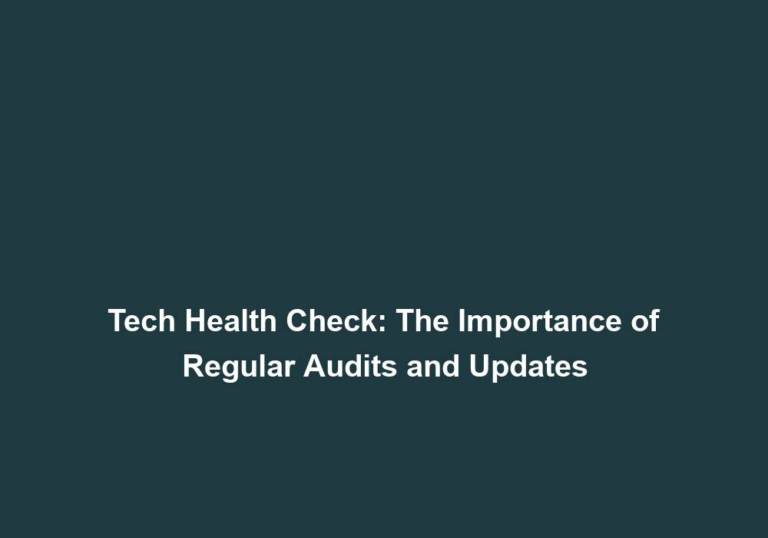Navigating the New Normal: Implementing Digital Tools for Enhanced Care
The healthcare industry has experienced a significant transformation in recent years, and the COVID-19 pandemic has acted as a catalyst for the adoption of digital tools and technologies. As we navigate the new normal, it is essential to explore innovative solutions for providing enhanced care, improving patient outcomes, and streamlining healthcare operations. In this article, we will delve into the various digital tools that can be implemented to effectively navigate this new landscape.
Telemedicine: Bridging the Gap
Telemedicine has emerged as an invaluable tool in the face of the pandemic, providing a safe and efficient means of delivering healthcare services remotely. By harnessing telemedicine, healthcare providers can conduct virtual consultations, diagnose and monitor patients, and offer expert advice without physical contact. This not only eliminates the risk of exposure but also enhances accessibility to care, especially for individuals in remote areas or with limited mobility.
Improved accessibility:
- Patients can receive medical care from the comfort of their homes, eliminating the need for travel and reducing geographical barriers.
- Telemedicine enables individuals in rural or underserved areas to access specialized healthcare services without the need for long-distance travel.
- Elderly or disabled patients can easily connect with healthcare providers, improving their overall healthcare experience.
Reduced costs:
- Telemedicine reduces healthcare expenses associated with transportation, parking, and childcare.
- Patients can avoid the costs of hospital stays or emergency room visits for non-urgent conditions.
- Remote consultations generally have lower fees compared to in-person visits, making healthcare more affordable for patients.
Increased efficiency:
- Healthcare providers can see more patients in less time, thanks to the elimination of waiting rooms and reduced paperwork.
- Telemedicine allows for better time management, as providers can schedule virtual visits more efficiently.
- Electronic prescriptions and digital documentation streamline administrative tasks, enhancing overall workflow efficiency.
Better patient engagement:
- Telemedicine facilitates regular communication between healthcare providers and patients, allowing for personalized care plans and more effective follow-ups.
- Patients can easily access their medical records and test results online, promoting active participation in their healthcare journey.
- Virtual consultations promote patient-centered care by providing a comfortable and convenient environment for open communication.
Electronic Health Records (EHRs): A Seamless Information Exchange
Digitalizing patient health records through Electronic Health Records (EHRs) offers numerous benefits, enabling healthcare professionals to access and share accurate patient information seamlessly. EHRs ensure continuity of care, enhance patient safety, and streamline workflows, resulting in improved healthcare outcomes.
Efficient data management:
- EHRs eliminate the need for manual record-keeping, making data storage, retrieval, and updates faster and more accurate.
- Patient information, including medical history, allergies, and medications, can be easily accessed and updated by authorized healthcare providers.
- Centralized data management reduces the risk of lost or misplaced records, ensuring that critical information is readily available when needed.
Enhanced patient safety:
- EHRs reduce the risk of medical errors by providing a comprehensive view of patients’ medical history, allergies, and medications.
- Computerized order entry systems help prevent medication errors and adverse drug reactions by flagging potential conflicts or contraindications.
- Automated alerts and reminders improve patient safety by notifying healthcare providers of necessary screenings, vaccinations, or follow-up appointments.
Interoperability:
- Electronic health records enable easy sharing of patient information across different healthcare settings, promoting coordinated care and preventing duplication of tests.
- Healthcare professionals can securely exchange information, such as lab results or imaging reports, facilitating a more holistic approach to patient care.
- Interoperability allows for seamless transitions of care between primary care providers, specialists, hospitals, and other healthcare facilities.
Data analytics:
- EHR systems provide valuable insights into patient populations, enabling healthcare providers to identify trends, improve clinical decision-making, and develop effective public health strategies.
- Analyzing aggregated data from EHRs can help identify disease patterns, monitor the effectiveness of treatments, and improve population health outcomes.
- Data-driven insights from EHRs contribute to evidence-based medicine, enabling providers to make informed decisions and deliver personalized care.
Remote Patient Monitoring: Continuous Care Beyond Traditional Settings
Remote Patient Monitoring (RPM) leverages digital tools to monitor patients’ health remotely, enabling healthcare providers to deliver personalized care outside of traditional clinical settings. RPM devices, such as wearable sensors, allow for the collection of real-time data, empowering healthcare professionals to detect health issues early and intervene promptly.
Proactive healthcare:
- Remote monitoring enables providers to detect changes in patients’ conditions before they escalate, reducing hospital readmissions and emergency room visits.
- Continuous monitoring of vital signs, such as heart rate, blood pressure, and blood glucose levels, helps identify potential health concerns in real-time.
- Early intervention based on remote monitoring data can prevent complications, improve treatment outcomes, and enhance patient well-being.
Enhanced patient autonomy:
- RPM empowers patients to take an active role in managing their health, promoting self-care and fostering a sense of control.
- Patients can track their own health metrics using wearable devices, promoting a proactive approach to wellness and prevention.
- Remote monitoring allows patients to stay connected with healthcare providers, receive timely feedback, and make informed decisions about their health.
Improved chronic disease management:
- RPM facilitates continuous monitoring of chronic conditions, allowing healthcare providers to adjust treatment plans based on real-time data and prevent complications.
- Patients with chronic diseases, such as diabetes or hypertension, can benefit from remote monitoring of symptoms and medication adherence.
- Remote monitoring enables healthcare providers to provide personalized education and support, empowering patients to manage their conditions effectively.
Optimized resource allocation:
- Remote monitoring reduces the burden on healthcare facilities, as patients can be monitored remotely, freeing up hospital beds for critical cases.
- By remotely monitoring patients’ health, healthcare providers can allocate resources more efficiently, focusing on those who require immediate attention.
- RPM reduces unnecessary hospital visits, minimizing healthcare costs and optimizing the utilization of healthcare resources.
Artificial Intelligence (AI) in Healthcare: Empowering Decision-Making
Artificial Intelligence (AI) technologies are revolutionizing the healthcare industry, enabling providers to analyze vast amounts of data quickly and accurately, and make informed decisions. AI-driven tools can assist in diagnosing diseases, predicting outcomes, and personalizing treatment plans.
Diagnostic support:
- AI algorithms can analyze medical images, such as X-rays and MRIs, to assist healthcare providers in diagnosing conditions accurately.
- Computer-aided detection and diagnosis systems improve the efficiency and accuracy of image interpretation, reducing diagnostic errors.
- AI-powered diagnostic tools can serve as a valuable second opinion, enhancing diagnostic confidence and improving patient care.
Predictive analytics:
- AI models can analyze patient data to identify patterns and predict disease progression, allowing for early intervention and preventive measures.
- Machine learning algorithms can detect subtle changes in patient parameters, risk factors, or genetic markers, enabling personalized risk assessments.
- Predictive analytics can help healthcare providers identify high-risk patients, optimize treatment plans, and reduce the likelihood of adverse events.
Drug discovery:
- AI algorithms can analyze vast databases to identify potential drug candidates, accelerating the drug discovery process and reducing costs.
- Machine learning models can predict the effectiveness and safety of drug compounds, leading to more targeted and efficient drug development.
- AI-driven drug discovery platforms have the potential to revolutionize the pharmaceutical industry, expediting the availability of new treatments.
Virtual nursing assistants:
- AI-powered chatbots and virtual assistants can provide patients with personalized health information, medication reminders, and emotional support, improving patient engagement and satisfaction.
- Virtual nursing assistants can answer common health-related questions, provide guidance on self-care, and offer resources for managing chronic conditions.
- AI chatbots enhance patient-provider communication by providing immediate responses and alleviating the burden on healthcare staff.
Conclusion
As the healthcare industry adapts to the challenges posed by the new normal, the implementation of digital tools is crucial for providing enhanced care and improving patient outcomes. Telemedicine, EHRs, remote patient monitoring, and artificial intelligence are just a few examples of the transformative technologies that can revolutionize healthcare delivery. Embracing these digital tools will not only help healthcare providers navigate the new normal but also pave the way for a more patient-centric and efficient healthcare system.







